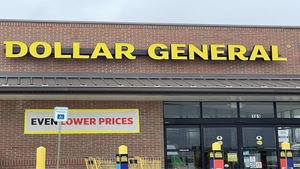A forum for contributed pieces from industry thought leaders, retailers, wholesalers and manufacturers. The views expressed are those of the authors.
Pickup, delivery, and the digital sales monsterPickup, delivery, and the digital sales monster
Online sales are still booming. But where’s the profit?

 Chloe Riley is the Executive Editor of Supermarket News, which delivers the ultimate in competitive business intelligence, news and information for executives in the food retail and grocery industry. A graduate of the School of Journalism at Columbia College Chicago, Chloe previously served as a Digital Strategist at SEO firm Profound Strategy, Associate Editor at B2B hospitality mag HOTELS Magazine, as well as CEO of her own digital strategy company, Chlowe.
Chloe Riley is the Executive Editor of Supermarket News, which delivers the ultimate in competitive business intelligence, news and information for executives in the food retail and grocery industry. A graduate of the School of Journalism at Columbia College Chicago, Chloe previously served as a Digital Strategist at SEO firm Profound Strategy, Associate Editor at B2B hospitality mag HOTELS Magazine, as well as CEO of her own digital strategy company, Chlowe.
Online grocery sales may have settled down to a level below the high rates of 2020, but they’re still well above pre-pandemic levels, and are only expected to grow in the coming years.
It all sounds well and good, but the problem remains — grocers have still not cracked the code on turning a profit when selling low-margin goods online.
Pickup and delivery both have a similar narrative. Although the two vied back and forth for share of the digital grocery market through the first half of the year, pickup ultimately won out as the preferred method of fulfillment for customers during the last several months of 2022, data shows. Overall, 52% of all digital grocery sales in 2022 were fulfilled via pickup as opposed to delivery.
The moral of the story is: none of these offerings are going anywhere anytime soon. Online grocery, pickup, delivery. The question is not if, but how? And more importantly, how to make money off these services and not get left in the lurch.
There are some options, one of them being: do it yourself and take delivery in-house. Third-party apps lost significant share of digital grocery share during the past year, according to Grocery Doppio research, accounting for 18.9% of grocery sales in December, vs. 31.3% of sales in January of last year.
Though there’s more of an upfront cost, taking delivery in-house ultimately can help grocers save money in the long run, and of course, tap into valuable shopper data that otherwise gets lost when working with Instacart.
In October, Aldi said it was working to develop a new online platform for its U.S. locations that would include grocery delivery and/or curbside pickup service. (The company has long worked with Instacart for both.)
At the FMI Midwinter conference in January, the topic of loyalty, both creating and maintaining it, was one that came up over and over.
“The loyalty program will be a key growth driver,” said Incisiv’s Gaurav Pant in an FMI Tech Talk. “We need to move from what’s only just acceptable, to what’s efficient and profitable.”
“Digital wasn’t just a fad. It’s here to stay,” Pant also said.
Indeed: Digital isn’t going anywhere. So, let’s start making it work.
About the Author
You May Also Like






